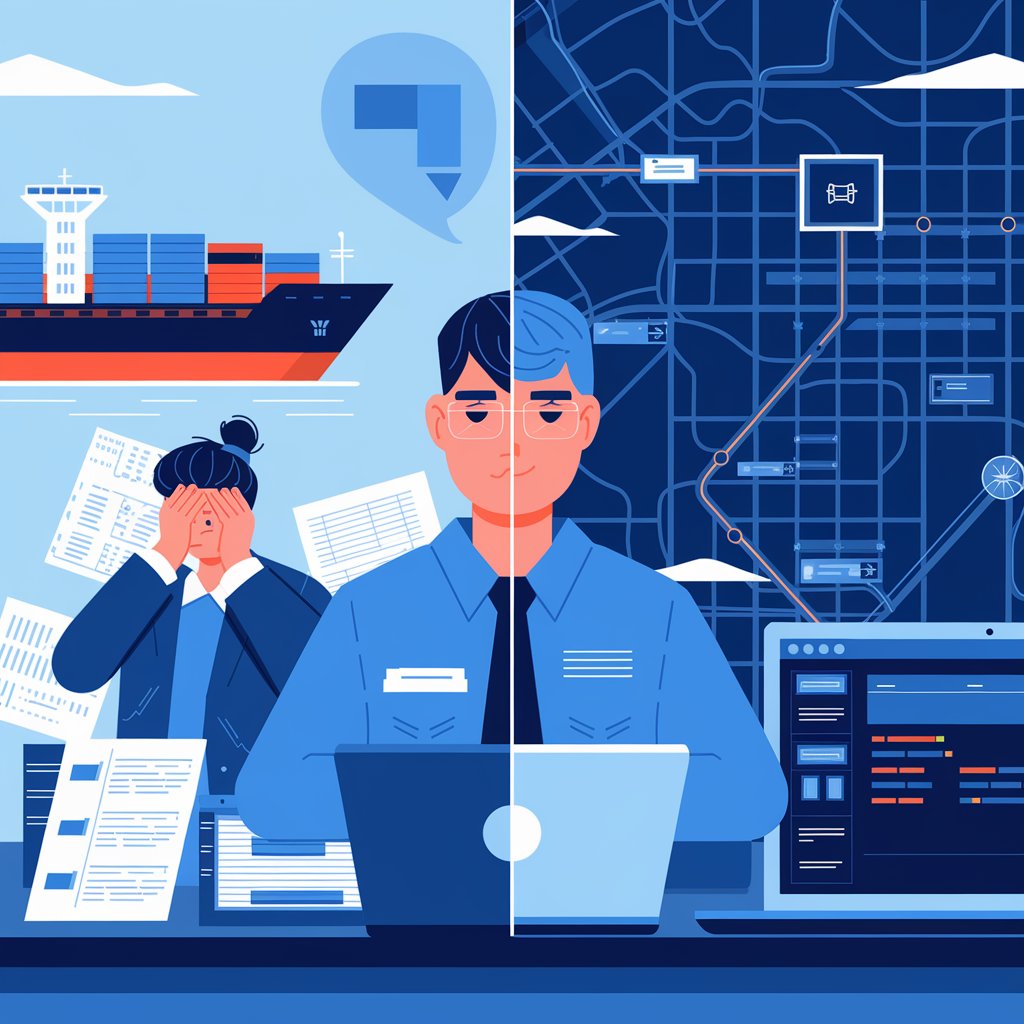Case Study: How Company X Reduced Delays with Container Tracking
For Company X, a mid-sized freight forwarder managing global shipments, delays were becoming the norm. Tracking containers manually with spreadsheets, emails, and carrier websites left their operations fragmented, slow, and reactive.

🚧 The Challenge: Manual Tracking Created Blind Spots
Container tracking case study before implementing Linbis, Company X faced:
- Constant back-and-forth emails asking, “Where’s my container?”
- Missed terminal pickups due to delayed status updates
- No unified view of shipments across different regions and carriers
- Manual updates spread across spreadsheets and inboxes
- High operational stress and delayed responses during disruptions
Their logistics team was spending hours each week updating data and tracking containers across multiple systems—leaving little time for optimization or customer communication.

💡 The Solution: Linbis Container Tracking Integration
Company X integrated Linbis into their freight operations, connecting:
- Ocean carrier APIs
- Port milestone updates
- Real-time container tracking data
- Internal shipment management workflows
- Client portals for shipment visibility
Key features used:
- Real-time container location via dashboard
- Automated alerts for customs holds and port delays
- Shareable tracking links for clients
- Historical reporting for lane performance
- Workflow integration with operations and customer service teams
📊 The Results: Faster Response, Fewer Delays
After just 90 days of using Linbis, Company X reported measurable improvements:
Metric | Before Linbis | After Linbis |
Average shipment delay | 3–4 days/month | < 1 day/month |
Client status inquiries | 60+ emails per week | < 15 emails per week |
Missed container pickups | 3–4/month | 0/month |
Internal tracking updates | Manual, 3–4 hours/day | Automatic, <30 mins/day |
Customer satisfaction score | 7.2 / 10 | 9.1 / 10 |

🚀 Key Takeaways from the Case
✅ Visibility = Control
By seeing where containers were at every step, Company X could plan proactively, instead of reacting after a delay occurred.
✅ Automation Saves Time
Manual data entry and email chains were replaced with live dashboards and automatic notifications.
✅ Clients Loved the Transparency
Shareable tracking links meant clients could check their shipment status anytime—without calling or emailing support.
✅ Fewer Delays = Higher Profit
Better planning and faster response meant fewer penalties, faster turnover, and happier customers.
📦 About Linbis
Linbis is a cloud-based freight management platform designed for global logistics professionals. Its container tracking features offer:
- Real-time updates
- Automated alerts
- Custom tracking links
- Integrated document workflows
- Reporting dashboards
Whether you’re a freight forwarder, 3PL, or shipper, Linbis helps you track smarter, serve faster, and grow confidently.

Final Thoughts: Visibility That Transforms the Supply Chain
Company X’s journey is a perfect example of how smart technology leads to measurable outcomes in logistics Container tracking case study. Their shift from manual tracking to an integrated platform didn’t just improve shipment visibility—it elevated every aspect of their operation:
- 📉 Operational delays dropped significantly
- ⏱️ Time-consuming manual work was eliminated
- 🤝 Customer satisfaction and trust increased
- 📊 Managers gained the data they needed to make informed decisions
In a world where margins are tight and expectations are high, the logistics teams with real-time insights win. They’re faster to react, more accurate in planning, and better at delivering consistent service.
